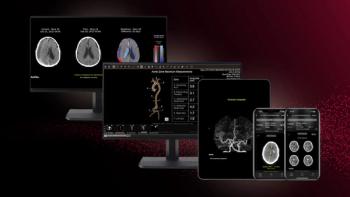Three clinical decision rules for pediatric wrist fractures are highly sensitive, but the validated Amsterdam Pediatric Wrist Rules has the most acceptable sensitivity and the greatest reduction in radiographs without missing clinically relevant fractures, according to a study published in the journal Pediatric Radiology. Researchers from the Netherlands sought to determine which clinical decision rules compared with the validated Amsterdam Pediatric Wrist Rules could help to avoid potentially unnecessary radiographs of the wrist among children. The researchers performed a Medline Pubmed search to find studies proposing a clinical prediction rule or decision rule in children presenting at the emergency department with acute wrist trauma. Of 67 pertinent studies found, four met all inclusion criteria. One study reviewed the Amsterdam Rules and three other studies evaluated other rules for wrist trauma among children. The researchers also included an external validation within a cohort of 379 children. Study 1 included 48 children, aged 3 to 18 years, with an acute wrist injury that did not present with a gross deformity. The physical examination of the wrist included measurement of range of motion and grip strength. Maximal tenderness of the distal radius, distal ulna, carpal bones and scaphoid was also recorded. A radiograph was obtained in all children after the initial clinical examination. Study 2 included 227 children, ages 3 to 16 years who presented following blunt wrist trauma, also excluding children with gross deformity of the wrist. Physical examination included focal swelling; grip strength; zone tenderness; and the range of motion of supination, pronation, dorsiflexion and palmar flexion. Radiographs were performed at the treating physicians’ discretion. Study 3 was a retrospective study including 189 children younger than 16 years who sustained a wrist injury within the week prior to the ED visit. Data were collected for bone deformity or bone instability, crepitance, pain or limited range of motion, swelling, point tenderness, decreased sensation and ecchymosis. Most physicians requested the radiograph before completing the data collection form. The results showed 24 missed fractures; 46 percent were buckle fractures, which are not considered to be clinically relevant because the treatment for such fractures is equal to contusions or sprained wrists. Treatment and prognosis would not have been influenced by the missed diagnosis. The remaining missed fractures using the other decision rules included, five epiphysiolysis injuries of the distal radius, four extra-articular distal radius fractures and three greenstick fractures were missed. The clinical impact of such missed fractures is considerable and treatment is necessary. The sensitivity and specificity of all clinical decision rules after external validation were between 94 percent and 99 percent, and 11 percent and 26 percent, respectively. After external validation 7 percent to 17 percent fewer radiographs would be ordered and 1.4 percent to 5.7 percent of all fractures would be missed. Compared to the Amsterdam Pediatric Wrist Rules only one of the three other rules had a higher sensitivity. Both the specificity and the reduction in requested radiographs were lower in the other three rules, however. The researchers concluded there was a high sensitivity for the three non-validated clinical decision rules, but the specificity and the reduction in number of requested radiographs are low. In contrast, the validated Amsterdam Pediatric Wrist Rules has an acceptable sensitivity and the greatest reduction in radiographs, at 22 percent, without missing any clinically relevant fractures.





























